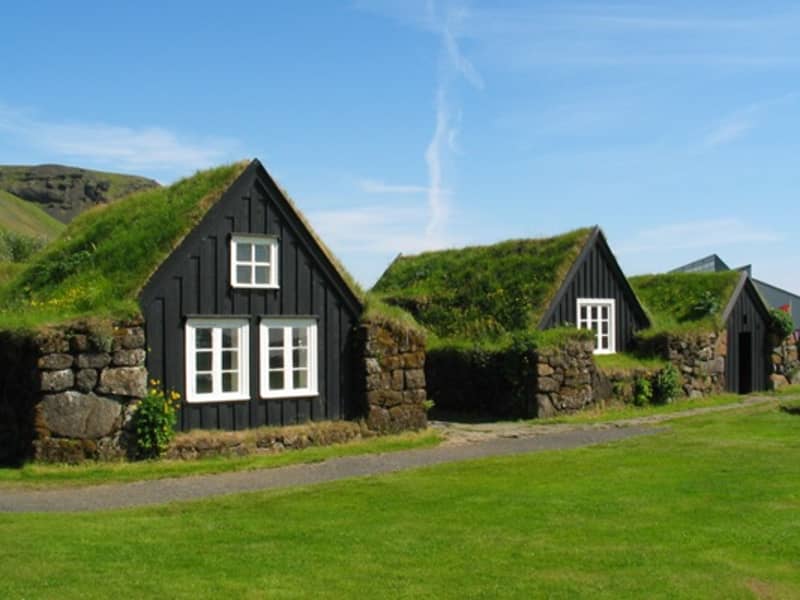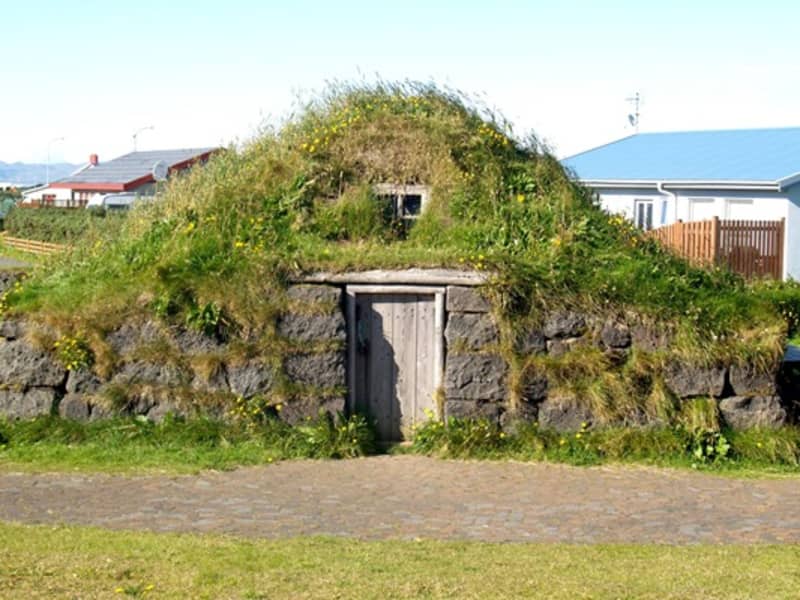Longhouses
The oldest type of dwellings in Iceland were longhouses which had one or two doors near the gable on the front of the house. In the 11th century the longhouses expanded so that there were three main buildings: a kitchen, living quarters and a store room and the other buildings could only be entered via the kitchen. In 1939 the remains of this kind of house were found at Stöng in Þjórsárdalur. The farm was destroyed in the eruption of Hekla in 1104. The Saga Age figure Gaukur Trandilsson lived at Stöng. To commemorate the 1100th anniversary of the settlement of Iceland, a replica farm based on the farm at Stöng was built in Þjórsárdalur in 1974.
The traditional turf farm
The Icelandic turf house developed from the longhouse in the 14th century. As the name indicates, the main building material is turf. Timber was used to build a frame and also panelling inside, while turf was used to form the roof and walls. Sometimes rocks were used in the walls with turf and stone slabs were sometimes used in the roof. In the late 18th century a new style of turf housing emerged, known as burstabær, which had wooden gables.
Building material
The Icelandic turf farm evolved from the longhouse, which came with the first settlers to Iceland. The main building material was in fact soil, both in turf and stone walls. Soil was packed tightly between the rocks and served both as an insulator and supported the weight of the walls. This type of housing did not last long and farmhouses needed to be frequently rebuilt.
Turf farms in Southern Iceland
A number of well-preserved turf farms and two turf churches can be found in Southern Iceland, including Austur-Meðalholt in the Flói district, Keldur in the Rangárvellir district and the turf farm at the outdoor museum at Skógar. The two churches are the chapel at Núpsstaður and the church at Hof in the Öræfi district. Most of these buildings are under the care of the National Museum of Iceland or other museums. Farm buildings made of turf and rock can be found widely across Southern Iceland in varying states of repair, some still in use. Replica turf houses have been built at Skálholt and Herjólfsdalur on the island of Heimaey.


